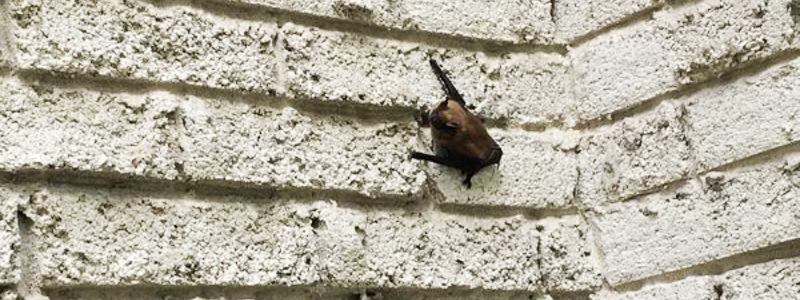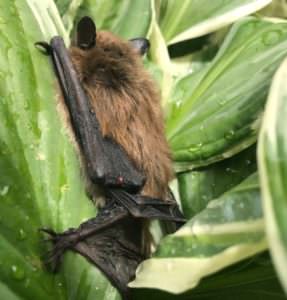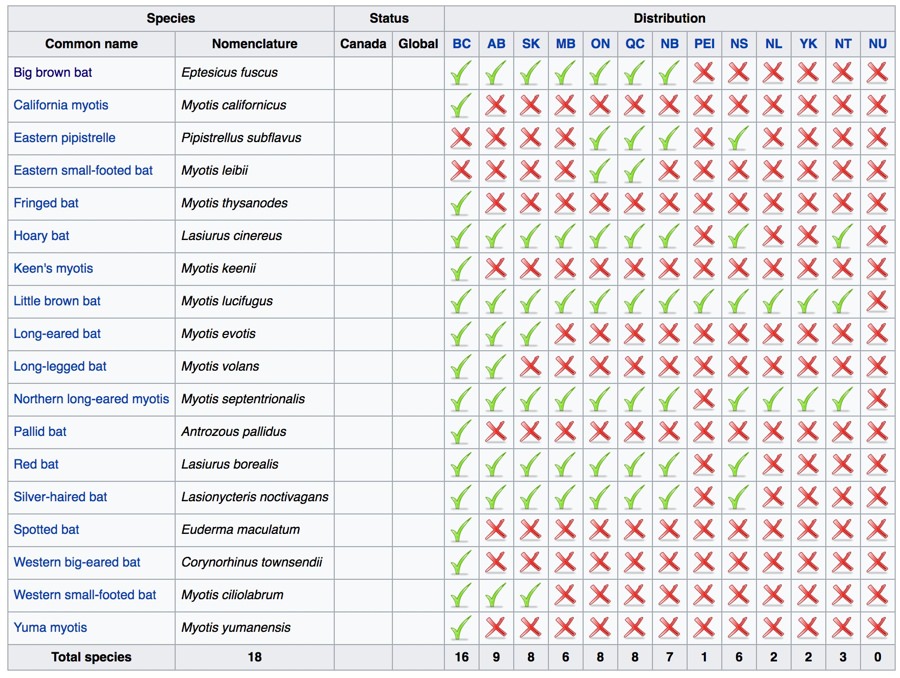
Is Your Home Protected From Bats? Probably Not
Posted by Jared Houliston Tuesday, July 18th, 2017 | 4,250 Reads
Bat season is here in Ontario so if you have bats living in your attic, you’re going to find out about it pretty shortly. If you don’t have bats, but your home is not protected, the odds are that it’s only a matter of time.
 But what can you do about it? How can you remove bats safely or prevent them from ever living in your attic?
But what can you do about it? How can you remove bats safely or prevent them from ever living in your attic?
There’s a saying up here in the wildlife removal industry – if it’s June and July, let bats fly. What this means is, is that bats are currently in their baby season and they usually give birth around the beginning of June. That’s why during these two summer months home owners harbouring bats usually see them more, and that’s why we consider these months the bat season.
By the end of July, the baby bats have pretty much reached maturity and begin flying to and from their roost (a bats nest).
The problem home owners face in this situation is what exactly to do with them and how to get the bats removed humanely – without breaking the law or adding to their dwindling numbers. The problem is that during these months there isn’t much that can, nor should be done.
Most wildlife control companies will tell that you until around the beginning of August when baby bats start flying, that a thorough inspection can be done; a removal program can be set up, and in turn 99% of the home can be sealed up. The main entry point will be left open until after August 1.
After August 1 we may install our one-way eviction doors which will then initiate the eviction of the colony.
Full exclusion should not be done during June and July because doing so would end up killing many of the babies, leaving your home with a bad odour and a lot of contamination, and because it’s against the law to put their lives in jeopardy by trapping them in an attic.
If you discover you do have an infestation, you can read our removal process for bats to get an idea of exactly how the procedure is done.
Homes unprotected from wildlife entries
The other likely problem is an unprotected home. As most home owners know, their homes don’t come with pest control incorporated into the build. You can ask any home owner who has harboured bats in the past, and they’ll tell you it only takes one small hole for a small family of bats to turn into a big infestation problem.
We always advise home owners (especially owners of new homes) to get their home inspected for entry points and nip the potential problem in the bud before future problems arise.
There’s a certain satisfaction in knowing your home is secured from wildlife entries, and doing so retains the value of your property, and keeps your family and pets safe.
Can you remove Species at Risk bats?
The most common bat found in a home owner’s attic in Ontario is the Little Brown and the Big Brown Bats which are currently being considered for protection under the Species at Risk Act. Their distribution in Canada stretches from B.C., Alberta, Saskatchewan, Manitoba, Ontario, Quebec, New Brunswick, P.E.I., Nova Scotia, Newfoundland, Yukon and Northwest Territories.
Other bats found with similar distribution in Canada are the Hoary bat, the Brown bat, the Northern long-eared myotis, and the Silver-haired bat. Although these species of bats can be found across the country, some of their numbers are dwindling because of disease and environmental issues.
Below is a list of bats in Canada and their distribution across the country Source: (Wikipedia: Bats in Canada)

On the same page linked to above the chart, you’ll also find the major disease that certain bats are contracting (white nose syndrome) which is one of the main factors contributing to their dwindling numbers – especially in Ontario and Quebec. This disease is the main reason certain bats in Ontario have been considered for protection and why removing them from your attic should be done professionally.
So how do I humanely remove bats from my attic?
The short answer is you don’t. Most home owners have very little experience with bats, and don’t understand their habits enough to remove them without posing a threat to them. First their exact location in the attic has to be determined; all their entry points need to be investigated and sealed up; and proper equipment needs to be employed which will allow them to leave your attic safely.
To push the matter further, we’ve linked to the official Ontario website related to dealing with bats in your home where it specifically advises home owners to call their local pest control company to have bats removed and prevented safely, and kept out permanently. On that page you’ll also find the laws related to bats under the protected species list where it states:
…endangered and threatened bat species cannot be harassed, captured or killed unless landowners enter into an agreement with the ministry…never trap bats inside a structure; this is cruel and can create a serious odour problem
The bottom line is that removing bats is not as easy as you may think. Giving it a go alone could further threaten their existence, and you are likely to end up breaking the law.
Can I protect my home from bats by myself?
The short answer here no, and if you’re not a professional, you should never try to remove bats yourself. Bat prevention is the most difficult of all the removal services that are needed.
Most wildlife control companies provide some sort of a guarantee for their services too, so doing it alone is not a truly cost-effective way of protecting your home and usually only causes more problems in the future.
What to look for if you suspect you have bats in your attic?
If you suspect bats are living in your attic you can find out for sure by the following:
- seeing bat guano (bat droppings) piled up in various places on your property like under window sills, anywhere on the ground or anywhere they’re entering and leaving your attic
- seeing bats flying in and out of your attic
- seeing bats around your home especially after sundown
- seeing one or multiple bats in your living space
- a pet who’s brought a bat into your home
- dead bats on your property
It’s important to remember bats do carry rabies. Although it’s rare that a human will get bit by a bat, it does happen from time to time so our advice would be to be careful and diligent if you do have bats. Bats also carry “bat bugs” (source) which can be carried into the home by unsuspecting carriers like pets. Another area of major concern is that an infestation usually comes with contamination so avoiding cleaning your attic without the help of a professional is highly advised against.
Don’t wait around for something to happen before deciding to get them professionally removed. We advise setting up an appointment as soon as possible to begin the first stages of eviction so at least when August roles around, most of the work will be done.
Please remember, back evictions can only be done at certain times of the year, so act now to avoid the delay.
One response to “Is Your Home Protected From Bats? Probably Not”
Leave a Reply
Ontario Wildlife Removal Inc. provides wildlife removal and pest control in Southwestern Ontario, including Brantford, Kitchener-Waterloo, Cambridge, Guelph, London, Woodstock, Tillsonburg, Simcoe, Port Dover, Paris, St. George, Six Nations, Caledonia, Burlington, Waterdown, Oakville, Hamilton, Stoney Creek, Grimsby, & Niagara Region. Our methods are safe, humane and environmentally friendly. Call today to book your inspection.
Get a Pest Control Quote
Simply fill in your details below and we'll call you very shortly to discuss your issues.





I had no idea that having one small hole is enough for a small family of bats to turn into a big infestation problem. Last week, my brother noticed that his floorboards were sinking in and when he investigated, he found a large infestation of termites. In order to quickly and effectively eradicate the infestation, he may need to hire a pest control company.